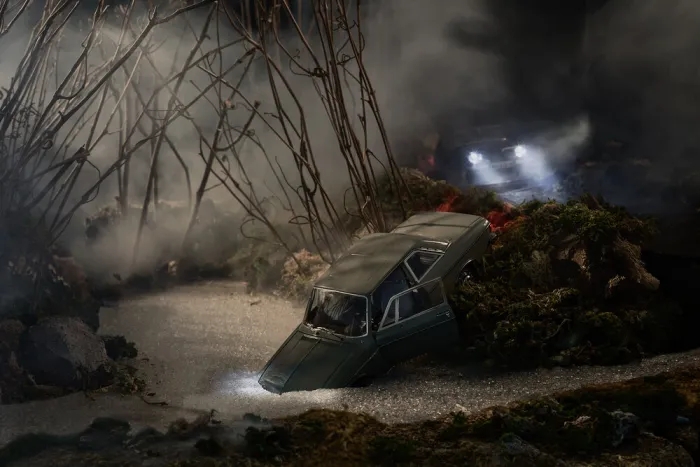
Mark Peterman , a photographer, tells me that he often says the scenes are either before or after a certain event. Inspired by mystery novels
His series of ambient music Constructed Realities The story takes place in an imaginary world created in miniature. Each image is a story of suspense conceived in the artist’s mind, not in reality.
Peterman first started building miniatures after completing several full-scale sets. The miniature scale models allowed him to create scenes which would have been impossible otherwise. He says that “each scene begins with a story concept”. “I write a small snippet from a story. It can be a sentence or more elaborate microfiction.
I often start with a character in a particular situation, and then develop a scene from that. I have a lot of creative material, including sketches, stories and journal notes. That I like to surround me with. I draw what I envision a scene looking like, and I often include dimensions in the technical drawing. “I have been keeping sketchbooks and journals as part of my daily creative process for many years.
Balsa wood and cardboard are his main materials. He explains that “once the basic structure has been completed, I will add some texturing elements as well as printed textural components and the finished model contains very intricate details.” The model may take a few days to complete, or even a week.
Peterman believes that the process of creating the fictional stories which inspire his work is much more mysterious. It’s largely driven by Peterman’s subconscious. The artist says that most of the scenes he creates are based on real-life stories. I also use fictional situations to create story ideas. Works of art and literature have also helped him shape his sensibility.
Peterman acknowledges that there wasn’t a single work of art which had influenced him, but rather a melting-pot of influences over the years. Peterman says, “Some of my favourite artists are Brian Eno and John Le Carre in different genres, Roman Polanski and John Atkinson Grimshaw.” Peterman’s connection to the painter is most obvious, since he shares his love of nighttime, mists, and iridescent street lights. Peterman’s photos are similar to Gregory Crewdson, but with one important difference: they do not contain any people.
He explains, “I think the scenes need to exist without humans.” It’s sometimes easier to picture yourself in a particular scene when there’s no other human present.
We are also observers, peering into a world not ours. Peterman’s photos are like peering inside a dollhouse that has been expertly constructed, with the same sense of anticipation and voyeurism. Peterman’s imaginative world is sometimes defined by a sleepy unease. A light on when it shouldn’t be there, a car that has run off the road or floorboards that creak in the dark.
The perfect medium for Constructed Realities is photography. This project is at its core an investigation into what’s real, and what’s not. He invites the onlooker to take on the role of detective. Peterman says that many people are unaware of the scale model when they first see it. “I love to play with the idea of breaking the fourth wall in a scene. “I think it’s good to be in a place where I can reveal something which makes someone doubt the reality of what they see.”
